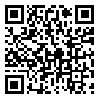Sat, Jul 12, 2025
Volume 4, Issue 2 (Summer 2006)
ASJ 2006, 4(2): 131-146 |
Back to browse issues page
Download citation:
BibTeX | RIS | EndNote | Medlars | ProCite | Reference Manager | RefWorks
Send citation to:



BibTeX | RIS | EndNote | Medlars | ProCite | Reference Manager | RefWorks
Send citation to:
Ebrahimi M, Bahar Vand H, Piriaei A, Masoomi M. Comparison of Ultra Structure and Gene Expression of Cultured Limbal Stem Cells and Fresh Conjunctival, Limbal and Corneal Tissues. ASJ 2006; 4 (2) :131-146
URL: http://anatomyjournal.ir/article-1-437-en.html
URL: http://anatomyjournal.ir/article-1-437-en.html
1- Department Of Stem Cells, Royan Institute Tehran, Iran.
Abstract: (1122 Views)
Purpose: The present study intends to show the characteristics of cultured limbal stem cell (CLSCs) and to compare them with normal Conjunctival (C), Limbal (L) and Cornea (K) tissues.
Materials and Methods: The expressions of a set of genes potentially involved in differentiation and stemness function of limbal stem cells were assessed in freshly prepared limbal, corneal, and conjunctival tissues by Immunocytochemistry, Immunoblot and RT-PCR. Also, ultra structure of limbal explants was cultured on human amniotic membrane (HAM) and normal tissues were evaluated by scanning electron microscopy and transmission electron microscopy.
Results: PAX6 and OCT4 were expressed in limbal, conjunctival, and corneal tissues. However, K3 were expressed only in corneal and K12 in both tissues. The gene, K3, was not expressed in limbal cultured explants (LCEs), whilst OCT4 was expressed in all stages. The expression of K12 and Cx43 increased over time in-vitro. Whereas, p63 expression was reduced. Ultrastructure analysis of the LCEs showed typically immature organization of intracellular organelles and architecture.
Conclusions: Our data suggest that limbal tissues are heterogeneous; containing both precursor cells and some differentiated epithelial cells. An epithelial cell sheet grown from a limbal explant on HAM retains important physiological and structural characteristics almost similar to normal limbal epithelium. Although specific markers of LSCs still remain to be identified, there is an increasing need to also determine factor(s) involved in their stemness.
Materials and Methods: The expressions of a set of genes potentially involved in differentiation and stemness function of limbal stem cells were assessed in freshly prepared limbal, corneal, and conjunctival tissues by Immunocytochemistry, Immunoblot and RT-PCR. Also, ultra structure of limbal explants was cultured on human amniotic membrane (HAM) and normal tissues were evaluated by scanning electron microscopy and transmission electron microscopy.
Results: PAX6 and OCT4 were expressed in limbal, conjunctival, and corneal tissues. However, K3 were expressed only in corneal and K12 in both tissues. The gene, K3, was not expressed in limbal cultured explants (LCEs), whilst OCT4 was expressed in all stages. The expression of K12 and Cx43 increased over time in-vitro. Whereas, p63 expression was reduced. Ultrastructure analysis of the LCEs showed typically immature organization of intracellular organelles and architecture.
Conclusions: Our data suggest that limbal tissues are heterogeneous; containing both precursor cells and some differentiated epithelial cells. An epithelial cell sheet grown from a limbal explant on HAM retains important physiological and structural characteristics almost similar to normal limbal epithelium. Although specific markers of LSCs still remain to be identified, there is an increasing need to also determine factor(s) involved in their stemness.
Type of Study: Original |
Subject:
Morphometry
Received: 2021/12/26 | Accepted: 2006/07/19 | Published: 2006/07/19
Received: 2021/12/26 | Accepted: 2006/07/19 | Published: 2006/07/19
| Rights and permissions | |
 |
This work is licensed under a Creative Commons Attribution-NonCommercial 4.0 International License. |



